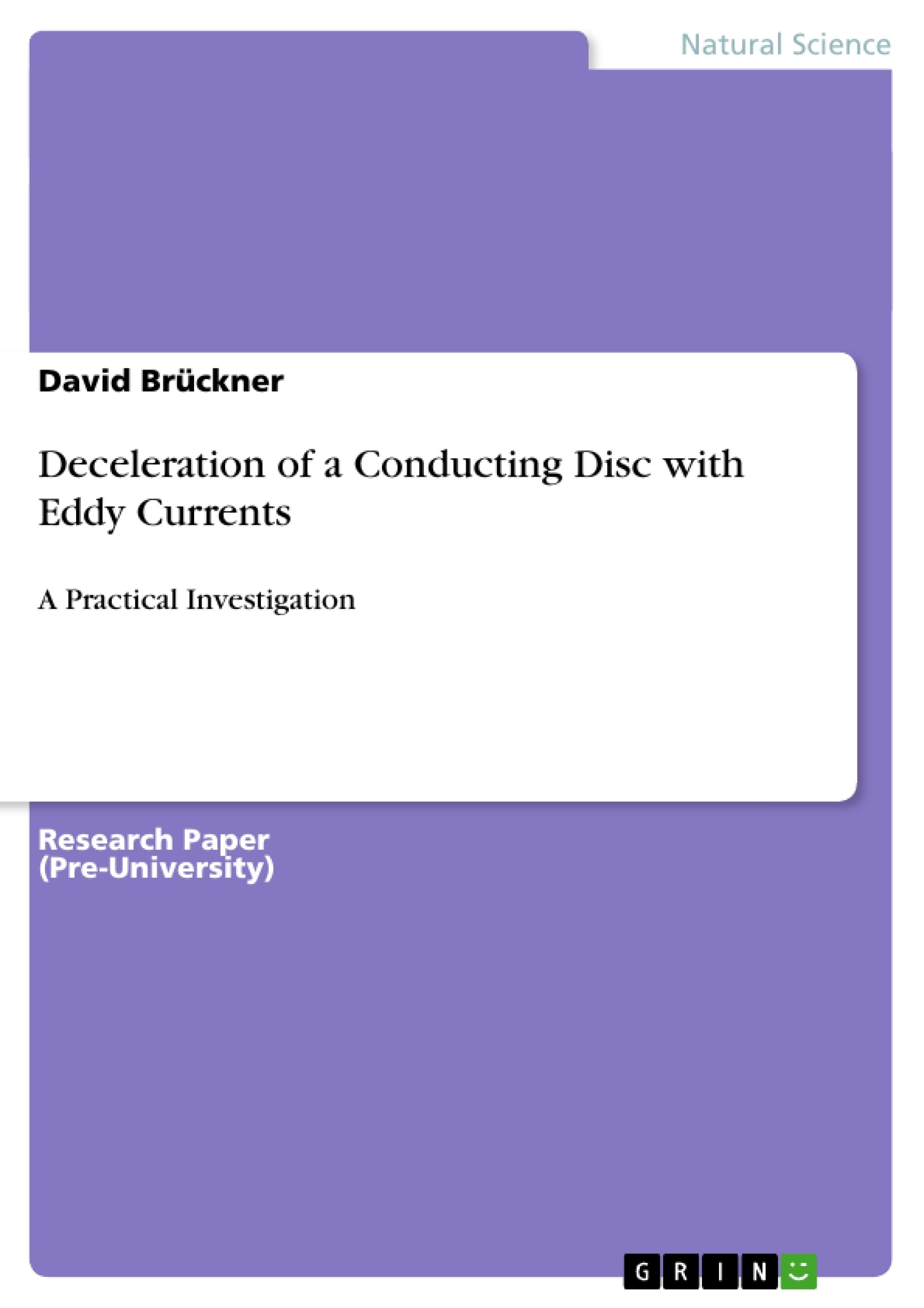The aim of this coursework was to examine the relationship between the deceleration effect of the eddy currents and the initial velocity of the disc as well as the strength of the magnetic field. Additionally, this was compared to the acceleration effect that can be produced using a different set-up in which a freely rotating magnet is following a motorised conductor disc.
Inhaltsverzeichnis (Table of Contents)
- Introduction and Theory
- Aim
- Experimental Procedure
- The main experiment
- Additional experiments
- Acceleration experiment
- Risk assessment
- Results
- Extracting from the raw data
- Accounting for friction and other energy losses
- Fitting a regression line
- Main experiment
- Acceleration experiment
- Interpretation
- Discussion of uncertainties
- Conclusion
Zielsetzung und Themenschwerpunkte (Objectives and Key Themes)
This coursework aims to investigate the relationship between the deceleration effect of eddy currents and the initial velocity of a disc, as well as the strength of the magnetic field. The work also explores the acceleration effect that can be produced in a different setup where a freely rotating magnet follows a spinning conductor disc. Key themes include:- Electromagnetic induction and eddy currents
- Deceleration and acceleration effects of magnetic fields
- Relationship between magnetic field strength, initial velocity, and deceleration
- Experimental design and data analysis
- Uncertainty and error analysis
Zusammenfassung der Kapitel (Chapter Summaries)
- The first chapter introduces the theory of electromagnetic induction and eddy currents, explaining how a changing magnetic field induces an electromotive force in a conductor, leading to the formation of eddy currents. It describes the two scenarios relevant to the experiment: a rotating disc with a stationary magnet and a spinning magnet following a conductor disc.
- The second chapter outlines the aim of the coursework, which is to investigate the relationship between the deceleration effect of eddy currents and the initial velocity of the disc, as well as the strength of the magnetic field.
- The third chapter describes the experimental procedure, covering the setup of the main experiment, additional experiments to measure magnetic field strength, and the acceleration experiment. It includes details on the apparatus, data acquisition methods, and a risk assessment.
- The fourth chapter presents the results of the experiments, detailing the data extraction process, the accounting for friction, the fitting of regression lines to analyze the exponential relationship between angular velocity and time, and the main findings from both the main experiment and the acceleration experiment.
- The fifth chapter provides an interpretation of the results, including a discussion of uncertainties and a conclusion summarizing the key findings. It also presents an analysis of the exponential decay of angular velocity based on a derived differential equation and explores the relationship between the decaying factor λ and the strength of the magnetic field.
Schlüsselwörter (Keywords)
This investigation focuses on electromagnetic induction, eddy currents, deceleration, acceleration, magnetic field strength, initial velocity, experimental design, data analysis, uncertainty, and error analysis. The experiment uses a rotating aluminium disc, an electromagnet, and light gates to measure angular velocity and analyze the effects of eddy currents.
Excerpt out of 26 pages
- scroll top
- Quote paper
- David Brückner (Author), 2012, Deceleration of a Conducting Disc with Eddy Currents, Munich, GRIN Verlag, https://www.hausarbeiten.de/document/207369



